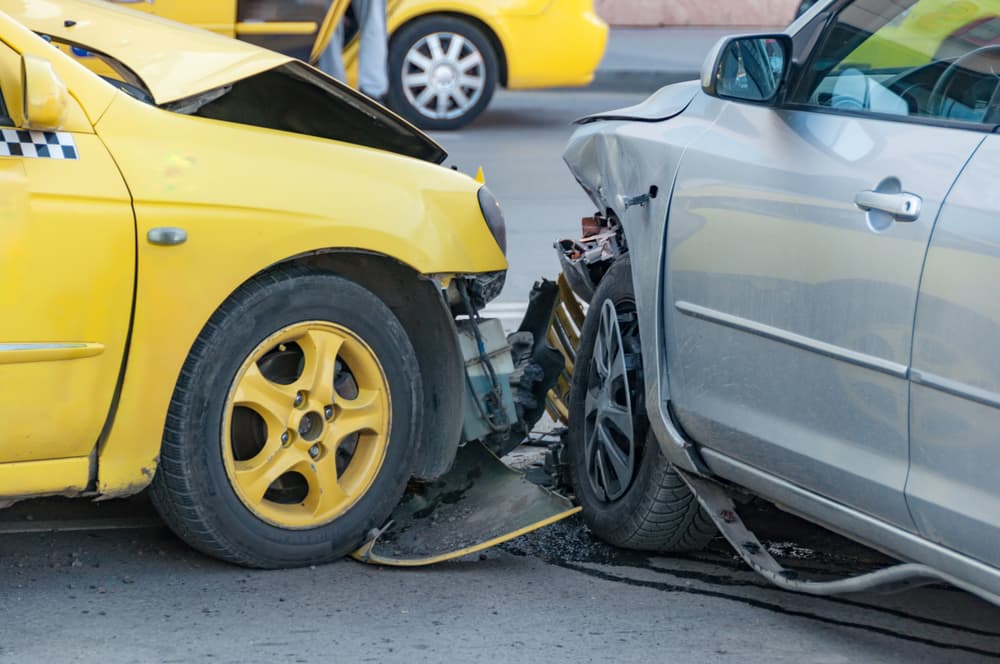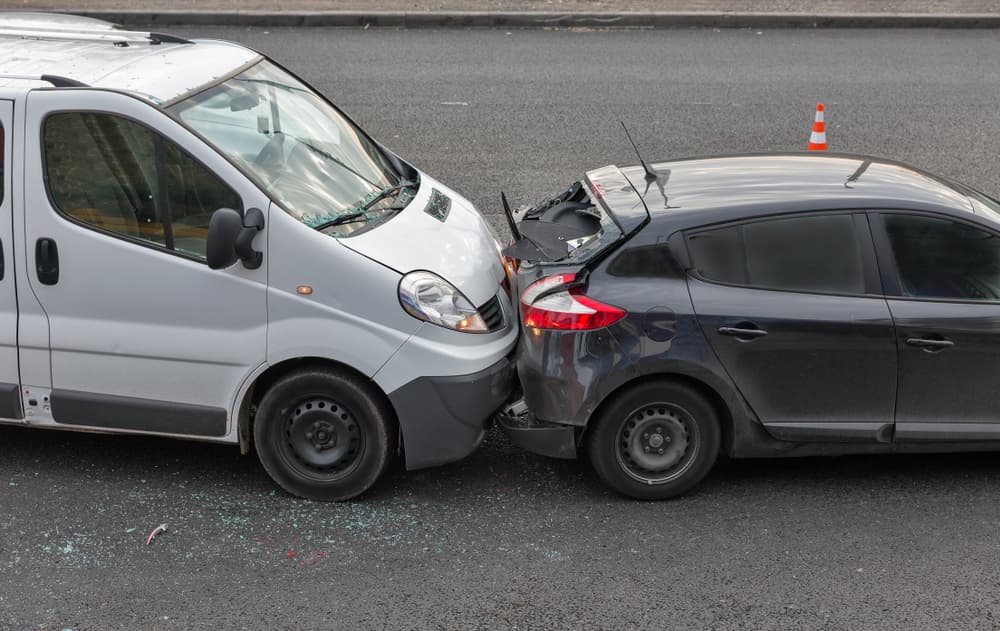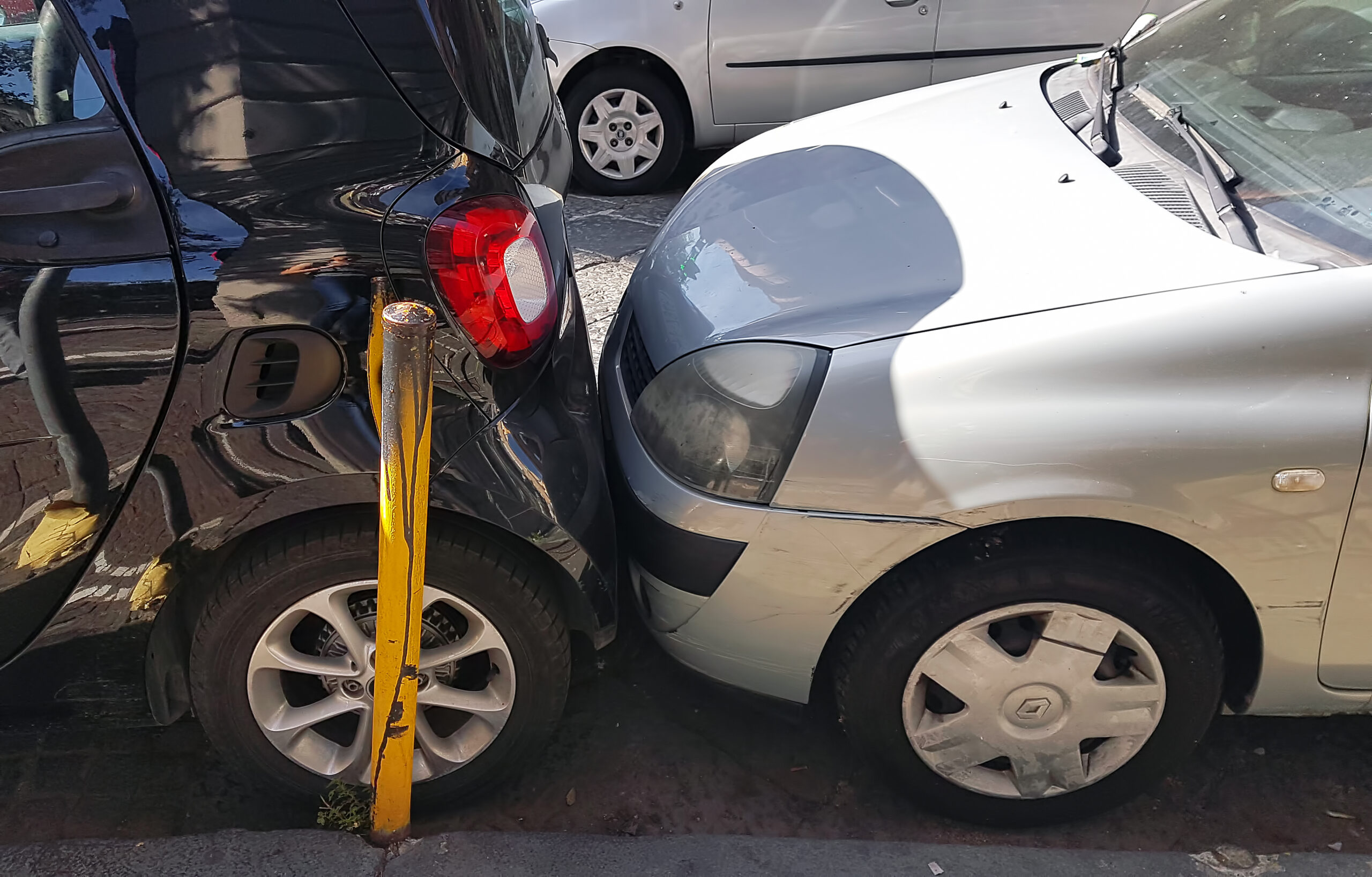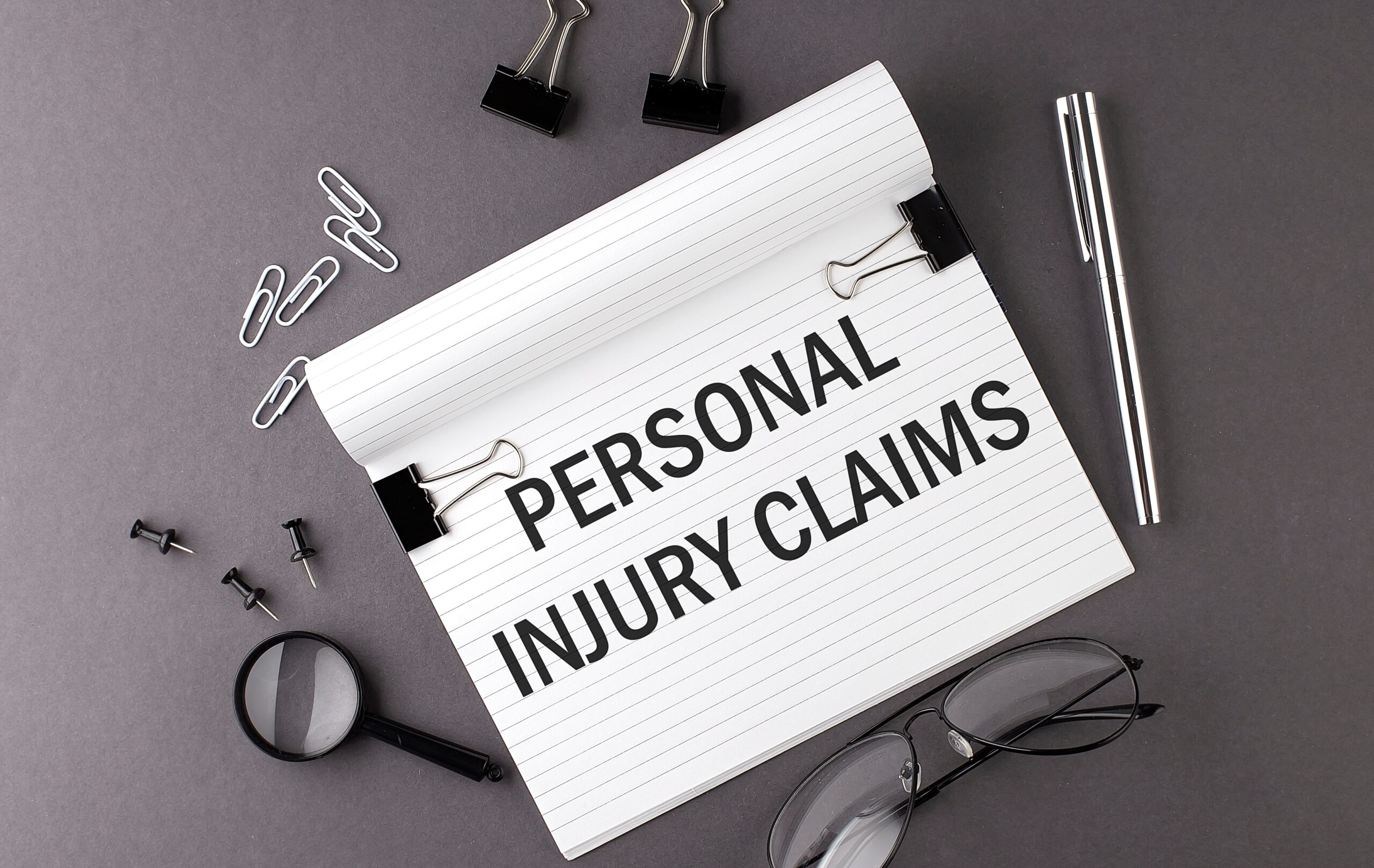Accidents involving taxi cabs frequently happen when drivers, sometimes third-party drivers, drive negligently and irresponsibly. If you suffered injuries in a taxicab accident, you may be eligible to recover monetary compensation from the at-fault driver or cab company's insurer. A knowledgeable motor vehicle accident attorney can assess the situation and estimate your case's likely settlement or litigation value. Your attorney can then promptly file a claim or lawsuit to pursue the financial recovery you need.
Who Is Responsible for a Taxicab Accident?

In the aftermath of a taxicab accident, determining responsibility hinges on a comprehensive analysis of the circumstances. The primary factors contributing to accountability are often the driver's actions, prevailing road conditions, and other external factors.
Drivers are crucial in ensuring safety, as they must adhere to traffic rules and exercise prudence. If the taxi driver violates traffic laws, such as by running a red light or speeding, their actions can lead to an accident. Recklessness, distracted driving, or driving under the influence further exacerbate the potential for collisions. In such cases, the driver assumes responsibility for the accident, as their conduct directly contributes to its occurrence.
However, responsibility is not always solely attributable to the taxi driver. Road conditions, weather, or mechanical failures can also play pivotal roles. Poorly maintained roads or inadequate signage may contribute to confusion and increase the likelihood of accidents. Additionally, inclement weather, like heavy rain or snow, can create hazardous driving conditions that demand heightened caution from all drivers, including taxi operators. Furthermore, mechanical failures, though less common, introduce an element of unpredictability. If a taxi experiences brake failure or other mechanical issues the driver was unaware of; responsibility may shift to the vehicle's maintenance and inspection protocols. Ensuring the taxi fleet undergoes regular maintenance and adheres to safety standards is a shared responsibility between the driver and the taxi company.
In some instances, third-party involvement, such as another driver's negligence or a pedestrian's disregard for traffic signals, can contribute to a taxicab accident. In these cases, determining responsibility involves evaluating the actions of all parties involved to discern the sequence of events leading to the collision.
Responsibility for a taxicab accident is rarely black and white. It is a nuanced interplay of driver conduct, road conditions, and external factors. Investigating authorities, insurance companies, and legal professionals play vital roles in untangling these complexities to assign accountability and facilitate fair resolution for all parties affected by the unfortunate incident.
Injuries in a Taxicab Accident
When taxicab accidents occur, they often result in a range of injuries, varying in severity. Whiplash, a prevalent consequence, stems from the abrupt forward and backward motion upon impact. This can cause strain to the neck and surrounding tissues, manifesting in pain and restricted mobility.
Head injuries are another common outcome, particularly if passengers or drivers are not wearing seat belts. The force of impact can propel occupants within the vehicle, leading to head trauma ranging from concussions to more severe brain injuries. Even with safety measures like airbags, the risk of head injuries persists, emphasizing the importance of proper restraint usage.
Fractures and broken bones frequently occur in taxicab accidents, primarily due to the force exerted during a collision. The impact can lead to fractures in limbs, ribs, or other skeletal structures. The severity of these injuries depends on factors such as speed, angle of impact, and the use of safety devices.
Soft tissue injuries encompass a broad harm category, including bruising, sprains, and strains. The sudden jolt in a taxi accident can cause passengers to collide with interior surfaces, resulting in contusions. Additionally, the impact may strain or sprain muscles, ligaments, or tendons, contributing to prolonged pain and potential long-term complications.
Psychological trauma is an often underestimated but genuine consequence of taxicab accidents. The emotional toll of experiencing a collision can lead to anxiety, depression, or post-traumatic stress disorder (PTSD). Passengers and drivers may grapple with persistent fear and apprehension about transportation, affecting their overall well-being.
Airbag deployment, while a safety feature, can also cause injuries. The forceful inflation of airbags may lead to burns, abrasions, or more severe injuries if passengers are too close or improperly positioned. Understanding the proper seating distance and adjusting accordingly can mitigate these risks.
Taxicab accidents can result in a full spectrum of injuries, encompassing whiplash, head trauma, fractures, soft tissue damage, and psychological distress. Recognizing the diverse nature of these injuries underscores the importance of implementing and adhering to safety measures to minimize the consequences for passengers and drivers alike.
Steps to Filing a Taxicab Lawsuit
Initiating a taxicab lawsuit against a negligent party involves a systematic approach to seeking legal recourse for damages. This approach involves several important steps:
- The first crucial step is to gather evidence from the accident scene. This encompasses obtaining all parties' contact information, including the taxi driver and any potential witnesses. Photographs of the accident site, vehicle damage, and injuries serve as vital documentation to support your case.
- Prompt medical attention is imperative following the accident. Seeking medical care ensures your well-being and establishes a direct link between the accident and your injuries. Medical records, diagnostic reports, and treatment plans become integral pieces of evidence in demonstrating the extent of harm the negligence of the taxi driver or other involved parties has caused.
- In addition, preserving any communication related to the accident is crucial. This includes correspondence with insurance companies, taxicab companies, and law enforcement. These communications serve as a chronological record of events and can be pivotal in building a compelling case against the negligent party.
- Engaging the services of a skilled personal injury attorney is the next pivotal step in pursuing a taxicab lawsuit. A legal professional with experience in traffic accidents and personal injury law can navigate the complexities of the legal system, assess the strength of your case, and guide you through the subsequent steps. They will help determine liability by scrutinizing the evidence, including accident reports, witness statements, and applicable traffic laws.
- After establishing liability for the accident, your attorney will prepare and file a lawsuit against the negligent party. This legal document outlines the details of the case, including the nature of negligence, the damages sought, and any supporting evidence. Serving the lawsuit to the defendant officially initiates the legal proceedings.
- Discovery follows; during this phase, both parties exchange information crucial to the case. This phase involves interrogatories, document requests, and depositions to gather comprehensive details. Negotiations and potential settlement discussions may occur during or after the discovery process to reach a fair resolution without going to trial.
If a settlement is not achievable, the case proceeds to trial, where your attorney presents evidence, arguments, and witnesses to support your claim. A favorable verdict can result in compensation for medical expenses, lost income, pain and suffering, and other damages incurred due to the negligence of the taxi driver or other responsible parties.
What Happens at a Taxicab Accident Trial?
A taxicab accident trial is a legal proceeding that unfolds in a courtroom, aiming to resolve disputes and establish liability for the damages incurred. The trial typically commences with an opening statement from the plaintiff's attorney, providing an overview of the case and outlining the key points they will present during the proceedings.
Following the opening statements, both the victim's (the plaintiff's) and at-fault driver's (defendant's) attorneys engage in the process of presenting evidence. This involves examining and cross-examining witnesses, including the parties involved, eyewitnesses, and expert witnesses. The goal is to construct a compelling narrative that supports the respective positions regarding the taxicab accident.
During the trial, attorneys introduce documentary evidence, such as accident reports, medical records, and any relevant correspondence to substantiate each party's claims. The presentation of physical evidence, such as photographs of the accident scene, vehicle damage, and injuries, enhances the jury's understanding of the case's circumstances.
During the trial, the attorneys may object to certain evidence or arguments the opposing side has presented, and the judge will rule on the admissibility of such elements. This dynamic exchange ensures the proceedings adhere to legal standards and procedural rules.
Both parties can present their arguments and perspectives in a closing statement, summarizing the presented evidence and urging the jury to render a favorable verdict. The closing statements serve as a final opportunity for the attorneys to persuade the jury and emphasize the strength of their respective positions.
After the closing statements, the judge instructs the jury on the applicable law and the criteria they should consider when determining liability and damages. The jury then deliberates to reach a unanimous decision. If the jury cannot reach a unanimous verdict, the judge may declare a mistrial, and the case can be subject to retrial.
Upon reaching a verdict, the judge announces the jury's decision in open court. If the verdict favors the plaintiff, the court proceeds to the damages phase, where the jury determines the amount of compensation based on the evidence presented during the trial. The last step involves the entry of a judgment, which formalizes the court's decision and outlines the awarded damages.
A taxicab accident trial is a meticulous legal process where attorneys for both parties scrutinize the evidence and present arguments. A jury then deliberates to establish liability and, if applicable, determine the compensation owed to the injured party.
Recovering Compensation for Taxicab Accident Injuries

In the realm of a taxicab accident claim or lawsuit, an accident victim may be eligible for several types of damages, each addressing distinct aspects of their losses:
- Economic damages are often considered tangible and quantifiable losses and encompass medical expenses, both current and anticipated future costs, related to the injuries sustained in the accident. This includes hospital bills, rehabilitation expenses, and any necessary ongoing medical treatments. Loss of income due to the accident is another facet of economic damage. If the victim cannot work during their recovery period or faces diminished earning capacity in the long term, they may seek compensation for these financial setbacks. In addition, economic damages may include damage to the victim's vehicle or personal belongings.
- Non-economic damages, on the other hand, are less tangible and more subjective. These encompass the pain and suffering endured by the victim as a result of the taxicab accident. Physical pain, emotional distress, and a diminished quality of life fall under this category. Determining the monetary value of non-economic damages is challenging, often requiring the experience of legal professionals who can effectively convey the repercussions of the accident on the victim's well-being.
- In certain cases, the accident victim may pursue punitive damages as well. Unlike economic and non-economic damages, the purpose of punitive damages is not to compensate the victim for specific losses. Instead, they are a form of punishment for the negligent party and serve as a deterrent to prevent similar misconduct in the future. A jury typically awards punitive damages when the defendant's conduct is especially egregious, displaying a conscious disregard for the safety and well-being of others.
Assessing damages in a taxicab accident claim involves meticulously analyzing the case's circumstances. Legal professionals work to compile comprehensive evidence to substantiate the economic and non-economic losses the victim has incurred. The victim's attorney enlists professional testimony to support the valuation of damages, especially when projecting future medical costs or estimating the long-term consequences for the victim's earning capacity.
Economic damages cover concrete financial losses. Non-economic damages address intangible harms such as pain and suffering, and punitive damages are a punitive measure against reckless behavior. The collective pursuit of these damages aims to provide a comprehensive remedy for accident victims, acknowledging both the measurable and immeasurable repercussions of their experience.
Contact an Experienced Taxicab Accident Lawyer Today
You may be eligible for monetary compensation if you suffered injuries in a taxicab accident. A skilled personal injury attorney can thoroughly assess your case, explore your legal options, and diligently file the necessary claim or lawsuit to pursue the maximum monetary recovery you deserve. Their experience handling such cases ensures you receive fair compensation for medical expenses, lost income, pain, and suffering resulting from the accident.



